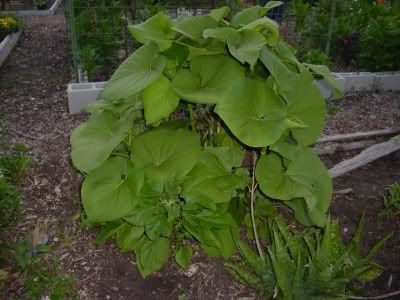Hierba Santa
Even though I have been in Texas for seven years, I am still adapting from my northern gardening notions. The seasons seem reversed, with the challenge to beat the summer heat rather than the fall frost.
But one of the pleasures of Austin’s subtropical climate is the ability to try new plants. An easy one is Hierba Santa, sometimes called Hoja Santa, sometimes called Root Beer Plant and sometimes called Piper auritum
Here is one picture of my hierba santa, before it grew about four feet taller later in the summer:
I started with one small plant that I picked up at the Downtown Austin Farmer’s Market and the Hierba Santa just took off. In Austin, the plant dies back to the ground with the first frost, but comes back with a vengeance in the spring, sending up new plants within about a two foot radius of the original plant and growing taller the second year.
During the time that I have spent in Oaxaca, Mexico, I have tried Hierba Santa in various dishes. It is often used to flavor beans and fish.
Disclaimer: Hierba Santa has been reported to have some toxic properties. However, people have been eating it in southern Mexico for quite some time.
I first tried Cua’a Za’a a few years back in Juchitán at the house of my good friend Omar Angel. I was amazed at how good a simple dish could be. He was kind enough to pass the recipe along to me. In Zapotec Za’a means bean and Cua’a means cooked corn.
Ingredients:
Cook the beans in water with the garlic and onion. When the beans are half cooked add the corn, hierba santa and salt. Be sure to add more water if needed, the dish should have the consistency of a broth. When the beans are well-cooked the dish is done.

